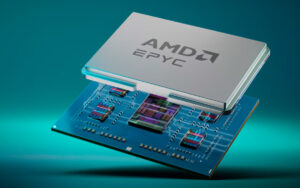
Everyone knows that the Windows Task Manager is incomplete, but Microsoft is slowly changing this and will make a change much requested by enthusiasts: changing the RAM speed from MHz to MT/s.
According to the Windows Insider blog, this change is occurring gradually among beta users – within build 22635.3570. It has not been announced when MT/s will be demonstrated in the Task Manager of all users, but it does not usually take that long after entering “Windows Beta”.
See more:


This Microsoft initiative on Windows is part of an entire movement organized by the industry to abandon once and for all the use of “MHz” to measure DDR speeds – since the clock frequency is actually below the effective speed of the memories.
In the late 90s, for example, this was not the case. All RAM memories were SDRAM (Synchronous Dynamic Random Access Memory) and their name was that precisely because they synchronized the clock speed of the modules. RAM performed one transfer per memory cycle, with 100 MHz, for example, being equal to 100 MT/s.
However, Microsoft and the industry paid attention to changes made in the early 2000s – with the arrival of DDR (Double Data Rate) SDRAM. With them, RAMs could perform two transfers per cycle – that is, if previously 100 MHz was equivalent to 100 MT/s, with its arrival it became 200 MT/s.


Windows will follow the trend
It is notable that, even with this difference, both Windows and other systems continued to use “MHz” to avoid confusion among users. In fact, this is still seen by RAM manufacturers, who use large numbers to represent their speed and continue using the standard – even incorrectly.
This means that a DDR5 6000 MHz actually has a clock frequency of 3000 MHz, but a performance of 6000 MT/s. With GDDR5X and GDDR6 it is even more discrepant, as they use QDR (Quad Data Rate). In other words, using MHz and GHz no longer fits within this scenario – especially when we describe GPU memory speed.


And this will not just be seen on Windows, as we stated above it is a movement that is being modified across the industry. It is becoming increasingly common to see memories being presented as DDR5 6000 MT/s, for example, rather than simply “DDR5-6000”.
Fonte: Tom’s Hardware


Join the Adrenaline offer group
Check out the main offers on hardware, components and other electronics that we found online. Video card, motherboard, RAM memory and everything you need to build your PC. By joining our group, you receive daily promotions and have early access to discount coupons.
Join the group and take advantage of promotions
Source: https://www.adrenaline.com.br/microsoft/tchau-mhz-gerenciador-de-tarefas-do-windows-mostrara-mt-s/


